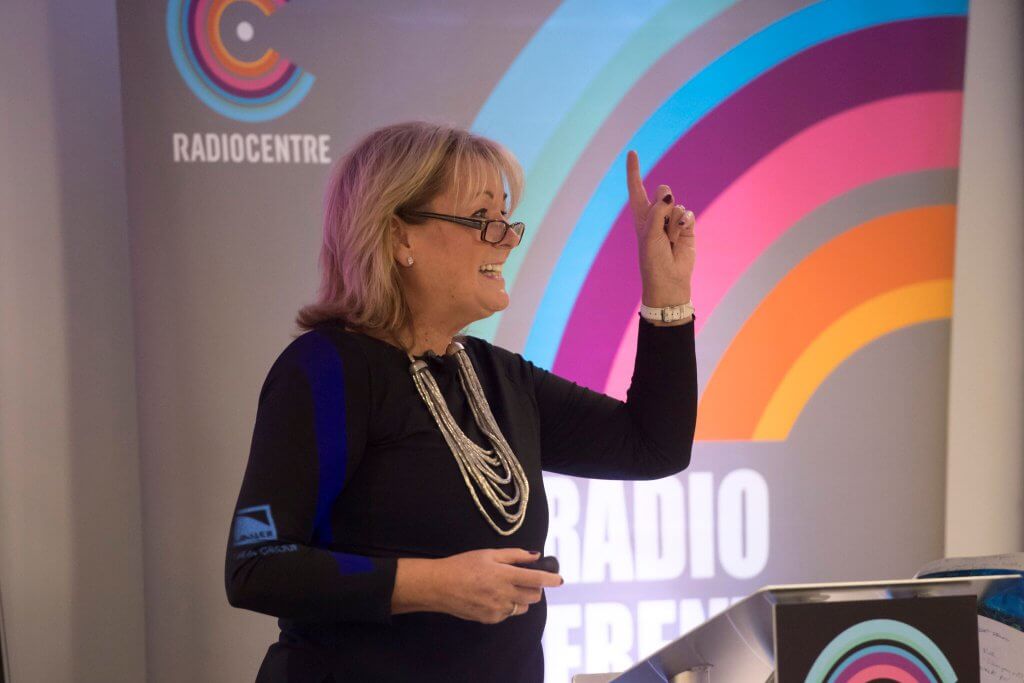
Tuning In Leeds celebrates commercial radio’s record-breaking renaissance

Advertisers, media agency staff and representatives from stations across the North of England gathered in Leeds for Radiocentre’s regional event to hear about why this has been commercial radio’s most exciting year yet.
Held at Cloth Hall Court on Thursday 18th October, the morning event welcomed guests with a breakfast reception before sessions from speakers exploring the continued successes of commercial radio, the enduring public value and trust in the medium, and the exciting innovations the future has in store.
Lucy Barrett, Radiocentre’s Client Director, opened the session and set the scene with a summary of Radiocentre’s recent activity, including industry-wide collaborations including the Mental Health Minute and the Young ARIAS. Lucy also showed the audience Radiocentre’s radio lifestyle photographs, which were commissioned as an antidote the ‘retro kitsch’ photos beloved by national newspaper picture editors and used to illustrate any story about the medium.
Next up was Matt Payton, Radiocentre’s Director of External Affairs, to talk about radio’s role as a trusted medium and the integral role it plays in society, paying particular attention to radio’s value in providing news and information. Matt also exclusively revealed a new government initiative, developed in collaboration with Audio UK, called the Audio Content Fund – a scheme to support a broader range of public service audio content on a wider spectrum of UK radio stations.
Tom Stevens, Radiocentre’s Marketing Manager, gave the Tuning In Leeds audience a showcase of the best practice audio creative out there, including examples of ads where powerful music and familiar songs played a central role in evoking emotion and conveying a memorable message.
Judith Spilsbury, Radiocentre’s Head of Special Projects, gave the audience a whistle-stop tour of Radiocentre’s range of online tools and resources to inspire and inform, as well as showing everyone an example of a particularly egregious and long-winded ‘Ts and Cs’ at the end of a radio ad.
Radiocentre’s Planning Director Mark Barber was next to take to the stage, with a Brexit-themed session all about how to navigate a marketing landscape should there be an economic downturn in 2019. Mark focused on the fact that marketing budgets are often the first to feel the squeeze of cost-cutting, but pointed out that this often leads to a loss of momentum for brands, and urged advertisers to keep radio front of mind as an effective tool as part of the wider media mix.
Mike Hill, Founder and MD of Radioplayer, revealed Radioplayer and DRUK’s recent research into the effects of in-car voice controlled radios on driver safety – the first time this study had been presented in the UK. The study concluded that in-car voice control integration meant that drivers could use their car radios more safely while on the road. He also shared a car radio display prototype, which brought together all stations from three different sources in a single list.
Dee Ford, Group Managing Director Radio at Bauer, gave a powerful presentation about commercial radio’s renaissance and continual innovation, saying “it feels like commercial radio is living life with abandon; we’re not just breaking the news, we’re making the news.” She went on to highlight DAB for its pivotal role in allowing commercial radio to grow, enabling commercial radio stations to compete on a more equal footing with the BBC.
The final presentation of the day was from Simon Forster, Regional Creative Director at Global. Simon’s immersive presentation involved the audience donning headphones, as he gave a showcase of the innovative technology and techniques involved in creating award-worthy audio. “In 45 years, the audio landscape has changed beyond recognition. But the radio ad format has remained largely static – until now” he said, when discussing the new wave of dynamic radio creative hitting the airwaves.


